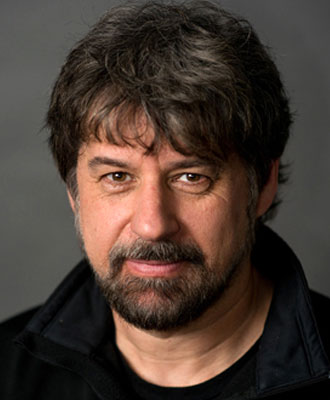Unless the capacity is exceeded, we will not respond to your email. Attendance is free, just bring along your lunch.
RSVP NOW for the next Microseismic User Group (MUG) event.
If you have any questions, please contact:
Paige Mamer, Paige.Mamer@tgs.com,
Johnny Wentzel, Johnny.Wentzel@esgsolutions.com
Abstract
Hydraulic fracture stimulations generally result in microseismicity that is associated with the activation of pre-existing fractures or in the generation of new fractures. Typically, the event distribution provides a sense of where fracturing is occurring and the extent of fracturing away from the treatment zone. However, by utilizing a multi-array multi-well distribution of sensors, a more complete descriptive image of the individual fractures can be obtained, including the type of failure (eg., tensile, shear, or shear-tensile), fracture azimuth and dip, as well as the relative dimensions (assuming a penny-shaped crack). These fractures, in essence, define the discrete fracture network that has been activated as a result of the stimulation program.
These data offer a unique approach to characterizing the rock mass fracture state. One approach we have considered is the adaptation of traditional scanlines utilized in rock mechanics applications. Scanlines are an effective systematic approach that considers the location and number of discontinuities that intersect the scanline. In order to effectively apply this approach to microseismic data, consideration had to be made of the event location errors for placement along scanlines perpendicular to the treatment zone at points of perforation. Much like setting a scanline at a rock face, additional quantifiable estimates of fracture curvature and roughness were defined. Additional estimates of discontinuity aperture were obtained based on the calculated tensile component of failure and corrections for angular differences between fractures obliquely oriented to scanlines. Further information can be gleaned on the fracture state through considering a topological approach to fracture characterization, where fractures are either considered as isolated, branching off from other fractures or crossing other fractures. By plotting the population of fractures in this rubric, the percolation properties of the reservoir post stimulation may be assessed.
Utilizing these approaches, we were able to define the relative uniformity of rock mass structure with similar fracturing properties. As well, we have been able to characterize the degree of uniformity with position from the perforation intervals. Our observations suggest that a change in fracture spacing and type is indicative of changes in rock mass response to the stimulation and can therefore be used to classify the varying fracture state of the reservoir. Data from these analyses provide further constraint or input on the development of geomechanical and reservoir models.
Biography
Dr. Ted Urbancic, a founder and current Chief Technology Officer at ESG Solutions, has over 30 years of experience examining and interpreting seismicity associated with mining and petroleum applications. He is a pioneer in the development of passive seismic monitoring in industrial applications, authoring over 150 publications ranging from understanding the fundamental aspects of seismicity to characterizing rock and reservoir behavior by integrating passive seismic data with numerical modeling, engineering and geomechanical data, and has received top 10 paper recognition on multiple occasions from the AAPG. Over the past 15 years, Ted has been integral in building ESG’s passive seismic hydraulic fracture monitoring capabilities and in promoting passive seismic tools for enhanced reservoir characterization. Currently, Ted oversees work by ESG’s Innovation and Technology Group, which spearheads all R&D related to passive seismic analysis, integration of new technologies, enhancement of geomechanical and reservoir/mine management systems in the mining and oil & gas sectors. Ted holds a Ph.D. in Seismology from Queen’s University, Kingston Canada and currently also holds an Adjunct Professorship in the Department of Geological Sciences. He is a member of numerous professional societies, including AAPG, AGU, CSEG, EAGE, SEG, SPE, SSA, and on the organizing committees for the 2014, 2016, and 2018 EAGE Passive Seismic Workshops.





